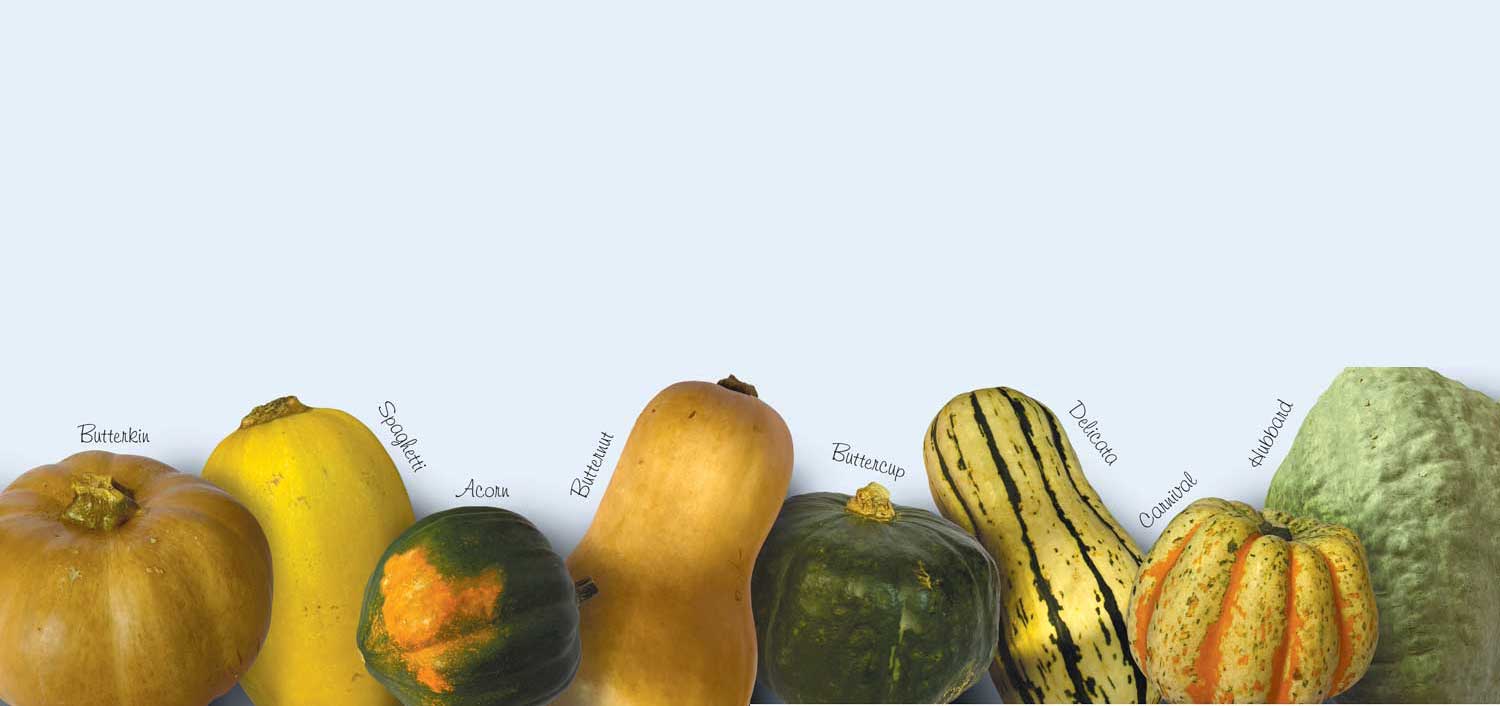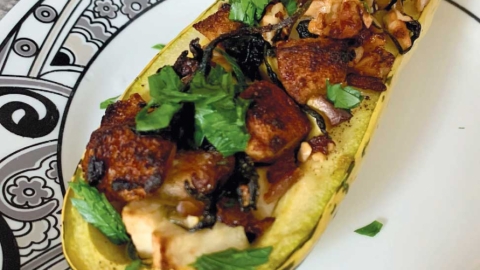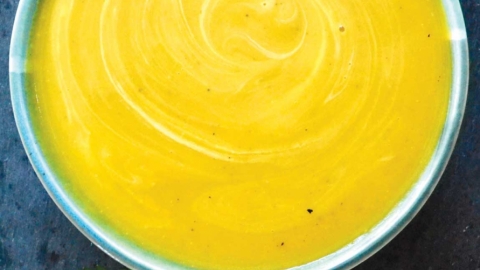Decorative and Delicious: It's Squash Season!
As one of the Three Sisters, squash was a keystone crop of Native American agriculture, grown symbiotically with the other sisters: corn and beans. In the typical field, dense squash vines protected the other two crops by acting as a natural mulch, preventing weed growth. Squash also has prickly stems that deterred pests. Meanwhile, sturdy stalks of corn provided structure for climbing bean vines, as the bean plants fixed nitrogen in the soil, helping to fertilize both squash and corn.
While this might sound like a brilliant feat of pre-modern agriculture, the first waves of European settlers were hardly impressed. But the attitudes of these Europeans quickly changed when they began to realize shelf-stable squash could help sustain them during the long North American winters. Other qualities such as rapid germination, fast growth and storable seeds made squash even more attractive to European settlers. Eventually, Europeans brought squash seeds back to the Old World, and cultivation in Europe took hold in the 16th century. Until then, squash had been exclusive to the Americas.
Modern squashes are generally lumped into one of two categories based on when they are harvested. Summer squash are fast-growing and smaller, typically harvested and eaten before they reach full maturity. Winter squash tend to be larger, oddly shaped and have thicker skin. These squashes have a longer shelf life that can last up to six months, if stored in a dry place at about 50 degrees Fahrenheit.
The active cultivation of squash continues to this day, and hybridization has produced a number of new commercially viable squash varieties. While some are grown purely for their ornamental value, many modern squashes are popular because of their taste and long shelf life.
ACORN
Acorn squash is one of the most popular varieties in Western New York, and you may not have given it much thought beyond how to roast it. However, this squash has been rebranded multiple times, often somewhat controversially.
At one point, acorn squash was referred to as Des Moines squash because a seed company in the Iowa capital was the first one to successfully market the squash. In the 1920s, a Wyoming seed salesman unsuccessfully tried to market acorn squash as a new vegetable: a hybrid of Hubbard squash and sweet corn called the “yama,” he said.
Regardless of what you want to call it, the acorn squash is typically cooked by cutting it in half and roasting it. Popular recipes call for filling each squash half with butter, sugar and spices.
BUTTERCUP
The name “buttercup squash” may remind you of the more popular butternut squash, but one look at its dark green skin and rotund shape, and any confusion with butternut squash should clear up immediately. Because it isn’t one of the more popular squashes, you’re more likely to find it at a local farmers’ market than at the supermarket. But don’t let a lack of popularity dissuade you from enjoying buttercup squash. One of the greatest culinary qualities of buttercup squash is versatility. Unlike acorn or spaghetti squash, buttercup works just as well as a substitute for pumpkin in sweet baked goods as it does in savory dishes. Because this winter squash has such a long shelf life, you can keep one or two in your pantry and reach for it when the inspiration strikes, or when you need a substitute for either pumpkin or another type of squash. As an added bonus, the seeds can be saved and roasted, either for a snack or as an ingredient in recipes that called for pumpkin seeds.
BUTTERKIN
Even though it’s been happening for thousands of years, the cultivation of squash hasn’t reached its conclusion, and one of the newest squashes to become commercially viable is butterkin squash. Since its introduction in 2014 by a New Zealand seed company, this hybrid of butternut squash and pumpkin is gaining popularity due to its firm, sweet flesh.
Butterkin squash is emerging as an attractive pie option that compares favorably to pie pumpkins. In fact, canned pumpkin purée actually comes from a close relative of butternut squash called Dickinson pumpkin. While pie pumpkins have somewhat fibrous flesh, the firmer flesh of butterkin squash is better suited to yielding that desirable custard-like texture of pumpkin pie filling.
BUTTERNUT
Developed in Massachusetts as a hybrid of crookneck and Hubbard squashes, butternut is probably the most iconic winter squash, and the most popular. It’s commonly found in both savory and sweet dishes, including soups, curries, pies and muffins.
You probably know and love butternut squash for its nutty, buttery and sweet flavor, as well as its smooth, starchy texture. It often gets compared to pumpkin and sweet potatoes. Some have compared the flavor of roasted butternut squash to that of carrots.
SPAGHETTI
Spaghetti squash gets its name from the way its cooked flesh easily splits into long strands that resemble strands of pasta. This type of squash has only gotten more popular as a pasta alternative as people increasingly look for gluten-free options and ways to avoid eating processed flour. In addition to resembling spaghetti in terms of shape and texture, spaghetti squash also has a fairly neutral flavor that pairs as well with traditional pasta sauces based on tomatoes, cream, butter or olive oil.
The natural fibers of spaghetti squash are wrapped around the main axis of the oblong squash. If you are looking to extract fully intact fibers, cut the squash crosswise to create two round halves, as opposed to two elliptical halves. Cutting the squash this way makes it slightly more difficult to remove unwanted seeds and pulp, but it yields the longest strands.
The way spaghetti squash is cooked can also affect the resulting texture of your pasta alternative. Roasting the squash removes moisture, creating crunchy strands. Steaming spaghetti squash produces strands that are much softer.
CARNIVAL
With its mottled, multicolored skin, carnival squash doubles as both a food and a decorative piece. The colorations of carnival squash can vary from one fruit to the next, and the appearance of these squashes can depend on average temperatures during the growing season. If the squash is grown in warmer temperatures, it tends to bring out more green coloration. After a carnival squash is picked, green colors begin to fade, eventually leaving only orange- and cream-colored skin. While you may want to pick the best-looking carnival squash for display on your dining room table, you’ll want to select squashes that feel heavy for their size.
The flesh of carnival squash is nutty and sweeter than other winter squashes. Roasting carnival squash helps to concentrate these flavors better than steaming. Carnival squash can be used in just about any winter squash recipe, but its robust sweetness should be taken into account.
HUBBARD
Weighing up to 20 pounds and having bumpy skin, Hubbard is probably the most alien-looking squash variety. But don’t let its appearance fool you. The sweet, nutty flavors of its flesh intensify the longer it’s stored.
Cooking a whole Hubbard squash is like cooking a turkey, and the easiest way to go about it is roasting it whole. Hubbard squash can also be sliced or diced and then simmered in a cooking liquid like water or stock. Because the texture of Hubbard squash can be slightly grainy, the best uses for it are in soups and purées.
DELICATA
Although seeds for delicata squash have been around since the 19th century, this variety has been highly susceptible to disease, keeping it from becoming a popular variety. In the early 2000s, plant scientists at Cornell University were able to develop a nonhybrid variety that resisted common squash diseases, resulting in a more commercially viable cultivar of delicata squash.
This variety of squash is distinguished by its thin, edible skin, which is unlike the thick inedible rinds of other winter squashes. The multicolored skin also makes this squash highly decorative.
Delicata squash is also prized by chefs for its presentation potential. The typical way to prepare delicata squash involves either slicing it lengthwise to create “boats” or widthwise to create rings. The seeds are then removed and the halves or rings are often filled with stuffing that commonly includes meat, vegetables or nuts. The stuffed squash sections are then typically placed on a baking sheet and roasted. High heat during roasting causes the delicata flesh to become caramelized, creating a crisp and complex sweetness.









